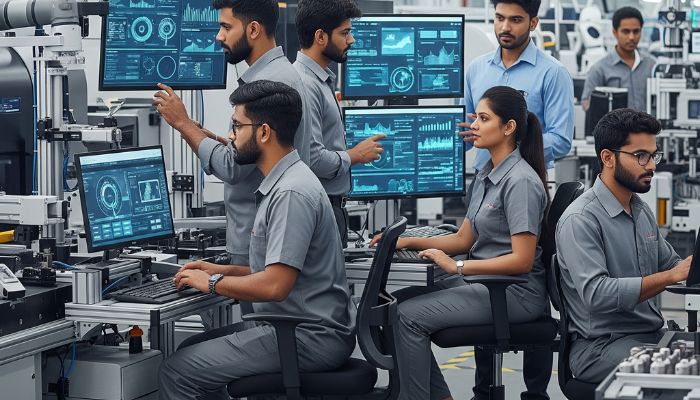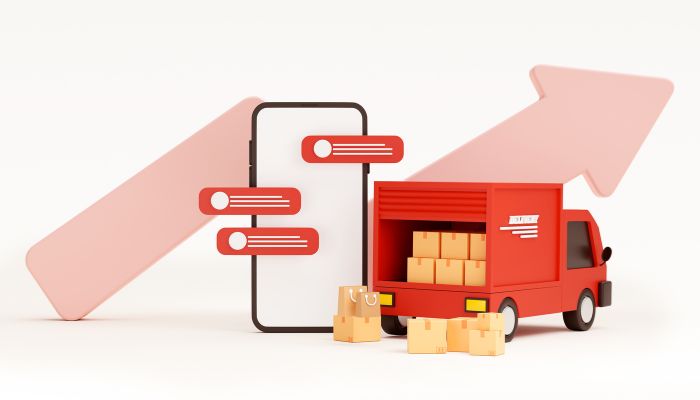Good people experience is essential to increase the organisation’s performance and help the company as a whole to provide enhanced services to the customer. What is people experience? Is it just another word for employee experience? No, people experience is not the same as employee experience. Let us discover what people experience is and how it can help make your organisation good at providing people experience.
Companies that have indulged in providing better people experiences have been evolving slowly. While retaining the workforce is necessary for a competitive market, knowing who wishes to be your staff and how they should be treated is essential. People experience is a little different from employee experience because it considers a multitalented and carried workforce and how an employee’s conditions at work can influence their relationships and life outside the office. It is an all-rounded approach that also influences how employees feel about the company they are employed at.
In today’s time, there is no shortage of job vacancies online. This available abundance has altered the rules and boundaries of the job market. People now prefer robust jobs with mobile work conditions and look for meaning in their professional positions. People now view their job as a consumer and have developed a habit of rating work experiences like restaurant or hotel experiences. In addition, the workplace is now vast with not just part-time and full-time employees but also independent contractors, leased teams, gig workers etc. People experience takes into account all these positions, with candidates that sat in the interview but did not make the cut as staff and even ex-employees.
You might also be interested to read: How HR Managers Can Use People Analytics For A Better Employee Experience
Companies like Gitlab, Siemens, and Google have dedicated teams for people experience. Google has renamed its HR department as the “People Operations Team”. The main mantra of this Google team is “find them, grow them, keep them”. The approach used by these teams is that employees are people, not mere workers. This leads to being motivated for human-centric interactions and paying attention to things that mean a lot to people, thus making working and being employed a positive experience for the people, in short, enhancing the people experience.
Why is people experience essential?
Employees today have high expectations from their employment and expect their role and company to contribute to the reflection of the way they live. They value interpersonal aspects and aspire to have meaningful interactions in addition to the responsibilities and tasks that are part of their job description. People also hope to be valued and appreciated by their employers and wish to experience a purpose within their company and a feeling of being a part of something. Companies that care about their employees and offer an inclusive environment for work speed up growth and a delighted workforce. A likeable people experience has several practical consequences like:
- An increase in innovation and productivity.
- Good customer service and better customer satisfaction.
- Higher profit
- Attracting and retaining the best human talent
Steps to improve people experience
Today’s workforce wishes to be looked at as humans and not mere employees. When employees are treated as humans, they also commence contributing in a meaningful way to the company. The steps to improve people experience at your company are:
1. Involving leadership: HR or the people experience team is not responsible alone for designing and shaping the people experience, but the entire organisation is. Leaders like senior managers have a big say in the company, and these leaders should try and improve people experience. When leaders show support to specific initiatives, success becomes guaranteed. To get leadership support towards people experience:
- Highlight issues in the business and how changes will make the issues disappear.
- Explain benefits that would be visible to both the organisation and workforce.
- Request for input from leaders and senior management and make a note of their concerns and ideas.
2. Not ignoring alumni and candidates: With ample work opportunities available today, employers have to offer a specific value to the employee, which makes them better than other hiring employers. The workforce wishes to belong to an organisation where it can grow with the organisation. This means a higher salary and better benefits, but with an attractive atmosphere and working conditions.
When people come to the office for an interview, they create a long-lasting impression about the company. Their feeling about the company also contributes to people experience; hence alumni and candidates should not be overlooked.
3. Enhancing experience of onboarding: Onboarding begins when an offer is made to a prospective candidate and ends when they settle in their new position. This process can also influence the perception that employees develop. A solid and customised onboarding experience makes employees feel that they are essential members of the organisation and leads to higher productivity.
Some techniques that can help individuals be successful after onboarding process include:
- Explaining the mission, culture and process of the organisation.
- Sending a personal message or interacting with senior management.
- An educational video about a typical day in the new role.
- Guidelines about workplace communication.
- Online training videos.
- Ways for providing feedback
4. Customising experiences: When the company has a diverse mix of talent, satisfying them can be very demanding. The employee has become a consumer, and the mentality of getting something exactly when they want it has become prominent. This can be done only through personalisation, so everyone performs well in the company.
Generalisations and assumptions should be avoided, especially about what motivates an employee. Employees should be asked which tools and type of environment they prefer to have so they can succeed at their job. Employers should make a note of these things and deliver them to employees. People experience at an organisation cannot be isolated from the employee’s day-to-day tasks and responsibilities. How they work depends on how they feel about the company. A workspace shaped as per their likes contributes to employees being satisfied with their employer.
5. Utilising technology: Satisfying the technological needs of employees is very essential. The employer must focus on each need that arises in different areas of the workforce. Full-time employees may have different needs, like an easy-to-access platform for benefits management, while part-time employees may prefer a reliable way to long working hours. Technology can also positively impact collaboration and communication and provide an overall improved experience. Video conferencing and anonymous feedback can make employees feel seen and heard. When building or revamping HR technology, make it a point to consider what all of your workforce wants.
6. Promoting organisational values: Organisational values should be discussed and promoted during the onboarding process and easily accessible to all workers and employees. These organisational values should be something apart from slogans and statements. When organisational values are actively modelled, they help the workforce understand how to change that into a behaviour. This helps in envisioning how to inculcate the value within themselves.
Senior management can lead by example as far as company value is concerned. When leaders share how these values helped them make profitable business decisions, the employees also see values as more than words.
Let it be noticed well if you wish to promote the desired behaviour. Use examples of others presenting those values and reward them for it. This will send a message to the rest of the workforce and motivate them to do the same.
7. Collecting and analysing data: Data is essential when you wish to use it to analyse people experience. Regular feedback and analysis of the same helps measure the workforce’s sentiment and helps predict what employees need and what motivates them. This must be done across all types of employees, including candidates. Instead of data on broad areas, surveys on specific topics can help make comprehensive assessments. Results should be analysed by dividing groups, and different strategies should be developed for each group. This helps in preparing concrete plans for strategies that can lead to better people experience.
How people feel about their work and job environment was never as significant to a company’s success as it is today. HR should deliberately tap into each employee’s outlook on the organisation. Holistically viewing the workforce and accepting that different people have different needs for good people experience will ensure you empower all your workers to unleash their best versions at work.
Reference: People Experience: What HR Needs To Know|AIHR|Andrea Boatman
You might also be interested to read: How Can People Analytics Help HR Enrich Employee Experience?






